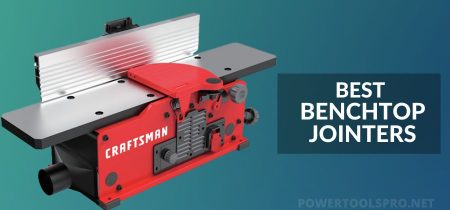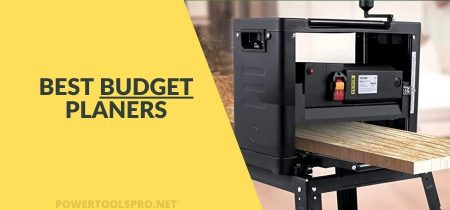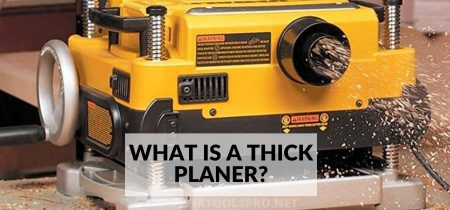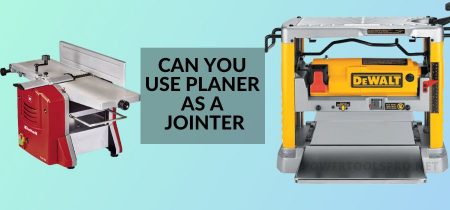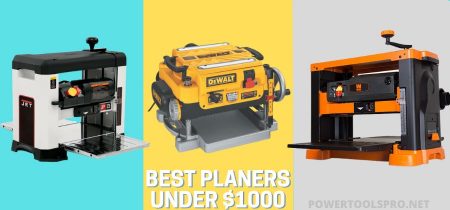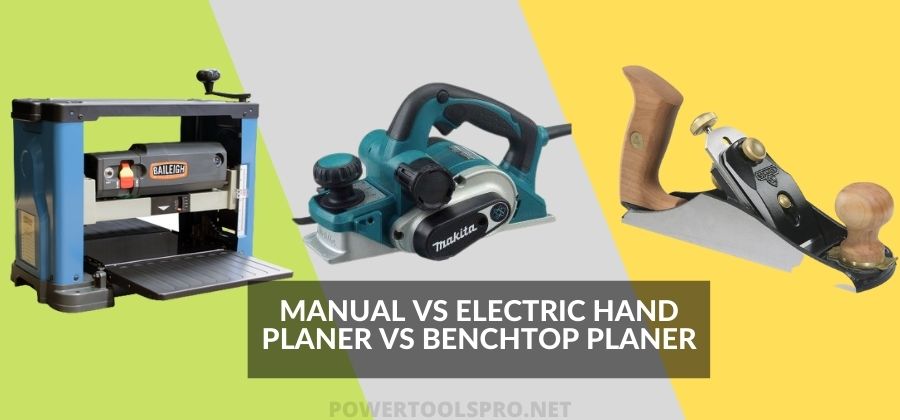
The planer market is extensive as it is. People are often overwhelmed by the vast variety of planers, each having different features, pros and cons, and prices, and the question, “What type of planer should I buy?” comes up a lot.
Now, if you are a beginner in the woodworking world, there are chances that you have asked this question at some point.
With this point in mind, we have made a comprehensive guide for you about all types of planers out there. You can weigh the pros and cons of each type and decide for yourself which one suits your needs.
Wood Manual Planer:
A blast from the past, this planer is where the planer journey started. With this planer, you can work using your muscle power since it lacks any electrical motor to run the cutter’s blades. You run the planer yourself on the piece of wood, and it shaves off the slices little by little with each stroke.
Features:
This planer has a thin steel blade, a chip break in the blade’s body to remove the cut-off chips, a knob for holding the tool, and a blade adjuster to give a small degree of control over the cutting depth.
You grab the tool handle with one hand and the knob with the other, hold the planer above the wood piece and move the tool to and fro above the wood to smooth out the wood surface of any unwanted thickness.
Now don’t get the idea that these manual planers have become obsolete. They serve many functions even today, be it smoothing the wood edges or ridges, or doing small jobs like making the doors fit into their frames.
Some of the pros of the manual planers include their portable design, allowing easy carrying, and their ability to be used without any initial installation. They don’t come with a motor, so no power source is needed.
This lack of any power source can also become a con since you will have to do physical labor to get your job done. With the direct involvement of your hands in the job, the chances of injury are also slightly higher.
Electric Planer:
With the advancement of technology, the planer world has also seen an upgrade from manual handheld planers to faster, more precise, and easy-to-use planers. Electric planers are one step higher than handheld manual planers in that they come with an electric motor to run the cutting blades to give faster and smoother results, with minimum labor requirements.
Features:
Electric planers feature a motor run by a battery or an external power source. The motor controls the blades, which run at several thousand RPMs of speed to planer the wood with only a few strokes. You run the planer over the wood with a to and fro motion, and the planer cuts the wood according to your chosen settings.
The planers also come with several other features, including depth control options to control the depth of the cuts, sound airflow systems to cast off the chips, dust bugs to contain the spread of the dust flying off the cut wood, and many others.
The pros of the electric planes include their ability to be used without any significant manual labor, faster planning job, depth control, and accurate cuts with each pass.
The cons include their higher prices than the manual planers, large size, and the availability of a power source to allow proper running.
Benchtop planer:
These planers are the cream of the planer world. Well, in certain aspects indeed. They are perfect for professional workers, from small home setups to large contractors who need a sturdy yet portable device to get their job done.
Features:
The benchtop planers can make the whole surface of wood materials like boards smooth and the faces of the boards parallel. Their design puts a considerable amount of power into a small portable setup.
They are certainly bigger than the handheld manual and electric planers. But once when they are put to work, they certainly deliver. With their greater depth control, faster-cutting speeds, and more precise results, they have become a staple in each woodworker’s shop.
All in all, they are the most powerful of the three planer types we have discussed. They can flatten the wood surfaces in a single pass and provide the most accurate cuts and smooth finishes.
Some of the cons of benchtop planers include their greater size, which may become difficult to carry around for extended periods. They also give splintered edges to the wood being worked many times.
Other Special Purpose Planers:
Various hand planers have specific purposes and have been used for the past two or three centuries. These do not need any electricity or battery power to work. It will take some time to get used to them, but they are worth the effort.
Some of the more unique planers used for particular purposes in woodworking include:
Rabbet planer:
The rabbit planer is a very old, simple, and straightforward planer still used worldwide. Its earliest use dates back to the 11th century, and since then, it has been used to clear out the rebates or rabbits in wood.
The blades in the rabbit planers protrude out by only a small amount – usually only some millimeters – on either side of the planer’s body. These planers are used for the long-grain type of wood. This wood has a special longitudinal arrangement of fibers.
These planers can cut a large amount of material very quickly, and with their continuous use even today, they still have a long time to see before becoming extinct.
Shoulder plane
The successor of rabbet planes, the shoulder plane, has the primary function of trimming out the shoulders of the tenons. Now you know why they are named shoulder planes.
Most of the time, the power tools perfectly meet our needs, but sometimes there is still some fine-tuning to do if you are a perfectionist like me. Though they are rarely out of your toolbox, they are equally essential for small tasks.
Shoulder planes come with full-body blades extending across the plane’s entire sole. This allows them to work in the corners or squares, which is needed for tuning the tenon shoulders.
The shaving that comes off the wood does not shed off from the sides; instead, it goes inside the body. Shoulder planes take off refined grains from the tenons, so effective shaving is unnecessary and can be stored in the body.
So if you have made up your mind to buy a shoulder plane, then get the one with the size that can cover the entire face that needs to be trimmed. So you don’t have to go repeatedly at the same place. The intersection between the sole and sides must be perfectly square so that it does not leave a flat surface behind.
Molding planes
Molding planes are used for carving out shapes on wood pieces to make them look attractive. Most of the molding planes present in the market are made of wood. The knife or blade is fitted into the plane’s body with a wooden wedge.
A vintage tool shop may still have a ton of them to give different shapes and draw different designs on architectural elements. But you don’t have to buy all of them. You can buy a few of them you like and give those designs to your timbre next time you work.
I advise you to get a dedicated molding plane as you can get a vintage one at a low price. Of course, it will need some tuning and rehab. But if you are not up for that, spend a few more and get an already tuned molding plane.
Router planes
Router planes are nothing but chisel blades that are fixed in a wooden or metal frame. These are used to refine the cuts produced by the machines, chisels, or saws.
These planes have been replaced by their counterparts these days. It does not mean they are useless and don’t perform the work. New power routers are simply handy and time-saving because of their speed.
But it is still relevant if you want to level a surface near to its final depth and needs a final touch. These have evolved with time; nowadays, the Veritas and Lie-Nielsen’s are making good router planes.
So if you plan to buy one, you know which brand to buy from.
Grooving Plane
A grooving plane, also known as the plough or plough(UK) plane, is used to make grooves on the wood boards. In case you don’t know, groove planes are different from the rabbets in that they are present in the center of the boards instead of one of the corners.
It comes with a fence and a guide at the edge and can be used to adjust the distance to the edge of the board.
These can help create frames for door construction or window sashes. Now that you know for which purpose these are used, you can decide whether you need one or not.
Conclusion:
Now that you have taken a complete look at all the different types of planers available in the market, you can decide on the type of planer you are going to get and can answer the question asked by many when looking for a planer, “What type of planer should I buy?”
Each planer has different features and pros and cons, making it unique. Before buying any, compare and contrast all the types, and start your woodworking journey.
